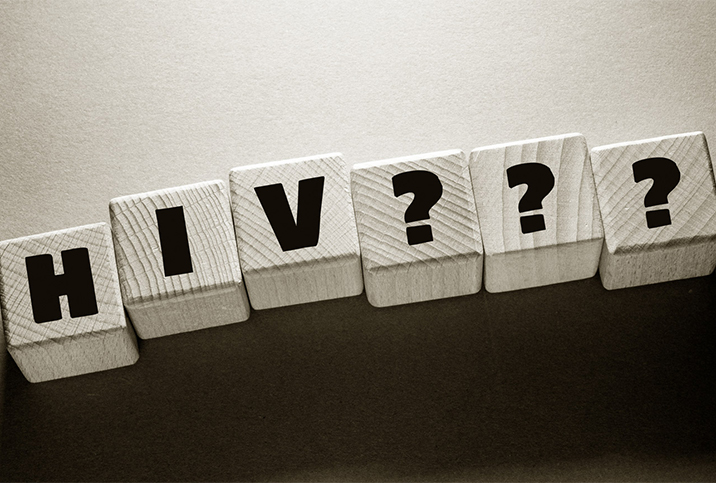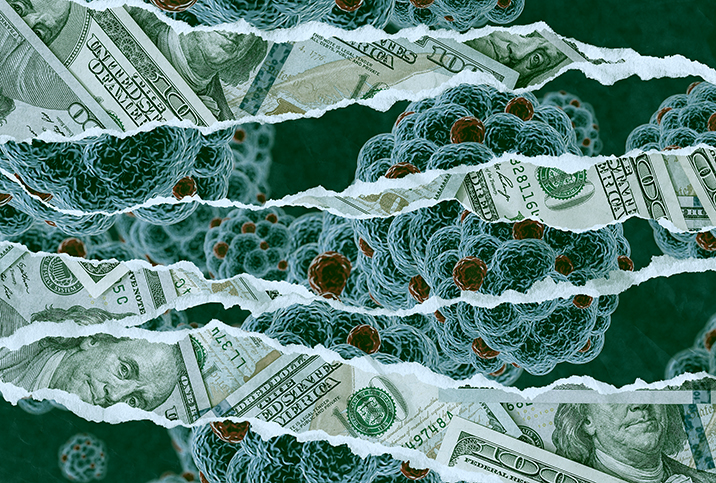HIV/AIDS: Myths & Misconceptions

Government statistics show that about 1.2 million people in the United States are living with the human immunodeficiency virus (HIV), a sexually transmitted disease (STD) that impedes the body's ability to fight other infections and diseases. If HIV is not treated, it can lead to acquired immunodeficiency syndrome (AIDS).
It’s also estimated that 1 in 7 of those infected with HIV have no idea they have the disease.
Around 40,000 people will be infected with HIV this year in the United States. The most recent statistics available indicated there were 15,820 deaths of adult and adolescent Americans with diagnosed HIV in 2018.
There are all kinds of myths surrounding both HIV and AIDS. Learn the facts you need to debunk them.
Human immunodeficiency virus (HIV)
Misunderstandings and fallacies regarding HIV have been around since the disease became known to most Americans in the 1980s, causing confusion among the general public and stigmatizing people with the illness. Because of such stigma toward HIV, several misconceptions about the condition continue to persist.
Myth: People with HIV usually look sick.
Reality: Individuals with HIV don't always show obvious symptoms and can appear relatively healthy. In fact, you've likely met at least one person, without realizing it, who is HIV-positive. According to the Centers for Disease Control and Prevention (CDC), about 14 percent of people in the United States who are HIV-positive are unaware that they even have the virus. For many people, HIV symptoms can mimic other common infection symptoms, such as fever and fatigue. In most cases, these symptoms are mild and disappear after a few weeks. People who get HIV treatment soon after they contract the infection are often able to continue living life in a relatively healthy condition. The myth that people with HIV always look sick likely stems from the fact that symptoms of HIV are mistakenly associated with AIDS-related illnesses and complications.
Myth: HIV is always fatal.
Reality: Advances in medical treatments have drastically improved the outlook for HIV-positive individuals. While it's true that an HIV diagnosis carried a much more dire prognosis in the past, the outlook has been better since 1996, when highly active antiretroviral therapy (HAART) was introduced as a treatment option. Patients who are able to get treatment early and consistently are typically able to live a normal life span, according to medical experts.
Myth: Mother-to-baby HIV transmission during birth is inevitable.
Reality: Though HIV is a sexually transmitted infection, it can also be passed from an infected mother to her baby during childbirth. But recent advances in medical treatment have yielded precautions pregnant women can take to drastically decrease the chances of transmission during delivery. According to the CDC, if a woman gets on antiretroviral therapy as soon as possible, stays on it throughout the duration of her pregnancy, and gives medicine to the baby in the first few weeks after birth, the risk of HIV transmission to the baby can be lowered to 1 percent or less.
Myth: Everyone with HIV will eventually get AIDS.
Reality: It's true that uncontrolled HIV is what causes acquired immunodeficiency syndrome (AIDS), but every person with HIV won't necessarily get AIDS. According to medical experts, as long as HIV-positive individuals seek treatment as early as possible and take their medications consistently, they have a high chance of being able to stay healthy and avoid an AIDS diagnosis. While the people in the U.S. Department of Health & Human Services don't put a number to it, they do claim, "In the U.S., most people with HIV do not develop AIDS," giving credit to medication regimens.
Myth: 'Straight' people aren't at risk for HIV.
Reality: Anyone who has unprotected sex—yes, that means anyone—runs the risk of getting HIV. Because HIV is most prevalent in men who have sex with men, many people mistakenly believe they don't have to worry about contracting HIV if they don't have sex with other men. But according to HIV.gov, heterosexual individuals accounted for 24 percent of new HIV infections in 2016, and about two-thirds of those individuals were women. To best protect yourself from getting HIV or any other sexually transmitted diseases or infections, be sure to use protection, such as a condom, when having sex.
Acquired immunodeficiency syndrome (AIDS)
Historically, AIDS has been a severely stigmatized disease, much to the detriment of people who have this incurable condition. This stigma has led to a wide array of misconceptions about AIDS. We isolated five of the most common myths about AIDS and found the facts that debunk such misguided thinking.
Myth: AIDS is the same thing as HIV.
Reality: It’s not uncommon for people to mistake AIDS and HIV as the same condition, but they’re not. The important distinction is that HIV is a sexually transmitted disease that, while incurable, can be managed with early and consistent treatment. AIDS, on the other hand, is the advanced stage of an HIV infection that causes the immune system to fail, leaving the body extremely vulnerable to secondary infections and illnesses.
Myth: You can get AIDS from sharing food with an infected person.
Reality: You cannot get infected with AIDS simply by sharing food or drinks with, or touching, someone who is infected with HIV. In addition, the virus can’t be transmitted by sharing the same air with an infected person, even if that person happens to cough or sneeze. The only way HIV can be spread is through the exchange of certain types of bodily fluids, including blood, semen, breast milk and vaginal fluids.
Myth: There’s no safe way to have sex with someone who has AIDS.
Reality: If your partner has AIDS, that doesn’t mean you can’t safely have sex with them. According to medical experts, using condoms during sex is an effective way to prevent the spread of HIV and other STDs. As long as your partner is undergoing treatment to achieve and maintain an undetectable viral load, and you consistently use condoms, the chance of HIV transmission between you is extremely low.
Myth: If both you and your partner have HIV/AIDS, you don’t have to use protection during sex.
Reality: Even if you and your partner both have HIV or AIDS, it is essential to use protection during sex. While treatment can help you maintain an undetectable viral load, HIV will always be present and transmittable in your body. Neglecting to use protection can lead to the transmission of resistant strains of the virus and perhaps cause treatment failure for either you or your partner.
Myth: Only members of the LGBTQIA+ community are at risk of HIV/AIDS.
Reality: Because HIV and AIDS are most prevalent in the LGBTQIA+ community, many people mistakenly believe that they are not at risk of the virus if they’re straight. The fact is, anyone who has unprotected sex with multiple partners runs the risk of contracting HIV. The risk of transmission also extends to people who share needles, regardless of their sexuality.


















